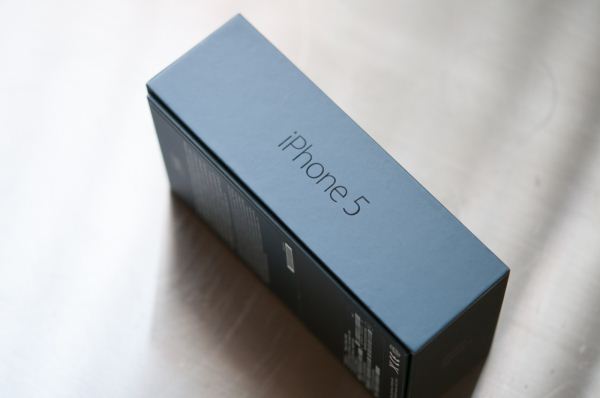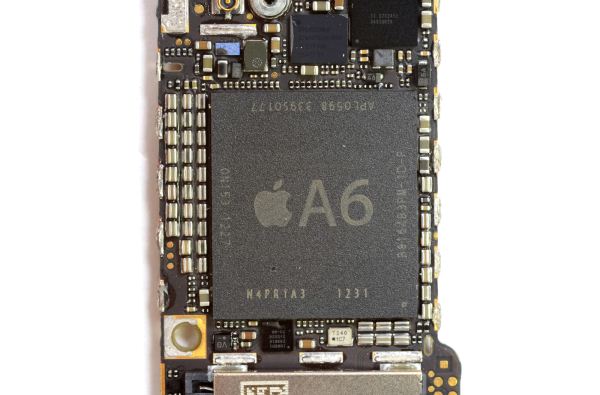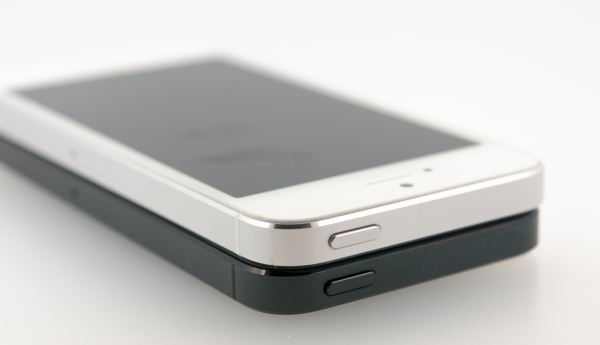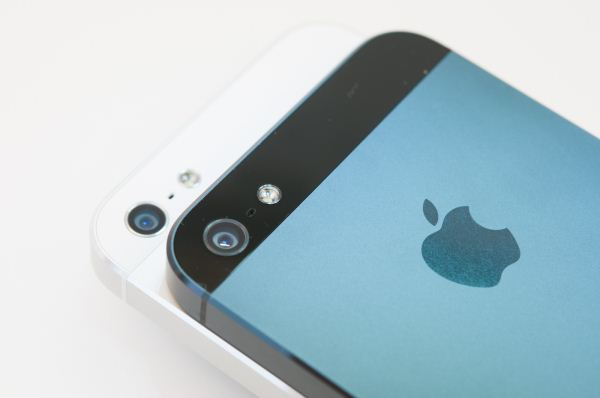The iPhone 5 Review
by Anand Lal Shimpi, Brian Klug & Vivek Gowri on October 16, 2012 11:33 AM EST- Posted in
- Smartphones
- Apple
- Mobile
- iPhone 5
Final Words
With a device vendor that also happens to moonlight as an SoC vendor and software developer we really need three parts to this conclusion. I’ll begin with the silicon, as that’s ultimately what enables the overall experience.
A6 SoC Conclusions
With the iPhone 4S Apple made a conscious decision to shift its annual smartphone release to the latter half of the year. At the same time, Qualcomm’s 28nm schedule put its new SoCs in phones at the earlier part of the year. All indications point to the first Cortex A15 based designs showing up similarly in the first half of 2013. All of this conspires to set the market up for some very interesting leap frogging. Without a major delay that impacts either Apple or its Android competitors, it looks like in the Spring we’ll see Android devices leapfrogging the iPhone and Apple responding in kind in the fall. The staggered release cadence won’t continue forever, but at least for the next generation it appears that will be how it plays out.
I don’t know which refresh cycle makes the most sense (new architectures earlier in the year vs. later) from a business standpoint. I suspect there’s something to be said about hitting the holiday buying season but I’m not much of a financial analyst.
Apple’s decision to introduce a custom ARM core in the A6 SoC is very unique. I would normally have expected Apple to go for a Cortex A15 based design in the next round however I’m no longer sure. Investing in your own CPU design isn’t usually something you do once and then just drop the next generation. I would assume Apple has plans to continue to evolve this architecture in a very power focused way. We’ve mentioned time and time again that ARM’s Cortex A15 was first conceived as an architecture for more power hungry systems (servers and other PC competitors). The Cortex A15 moved down the totem pole and will likely rely on smaller cores to keep power consumption in check when running lighter workloads. It wouldn’t be a stretch to envision a slightly larger (~20%?) Swift core next generation built at Samsung or TSMC, adding some architectural features to drive performance up.
Swift appears to offer better power/performance efficiency than any other currently available ARM architecture. Its architecture, performance and power profile most closely resemble Qualcomm’s 28nm Krait/Snapdragon S4, although through hardware or software optimizations it appears to be able to come out slightly ahead. Apple complicates the gains in performance by increasing clock speed dramatically over the iPhone 4S, which makes the architecture look more revolutionary than evolutionary in nature. A good part of the 2x increase in CPU performance compared to the iPhone 4S boils down to clock speed, however there are significant improvements to the memory subsystem that really help things. ARM’s Cortex A15 will likely pull ahead of Swift in CPU performance, although it remains to be seen how it will compare in power and what Apple will respond with in late 2013.
Intel’s Atom core remains very competitive with the best of the ARM world. A single core Atom still ends up being the only CPU that can regularly outperform Apple’s Swift, however it does so while seemingly consuming more power. Whether the performance advantage can make up for the peak power deficit remains to be seen as we lack a good, high-end Atom based LTE smartphone to really test that theory against.
On the GPU side Apple continues to be at the forefront of innovation, however Qualcomm appears to have learned quickly as the Adreno 320 manages to give the PowerVR SGX 543MP3 a run for its money. I suspect next year we’ll see similarly competitive performance from Intel and NVIDIA as well (finally!). Having an aggressive player in the silicon space always makes for good competition once everyone adjusts their release cadence.
Overall the silicon story in the iPhone 5 is a very good one. Performance increases by the biggest margin since the move from the iPhone 3G to 3GS. If you are the type of user who can appreciate improved response time, the iPhone 5 definitely delivers.
The market is becoming increasingly competitive however. Just as Google responded aggressively to close the UI performance gap between Android and iOS, the SoC vendors appear to be doing the same with their silicon. Going forward it is going to become more difficult to maintain significant performance advantages similar to those Apple has enjoyed in previous generations. It’s really going to boil down to software and ecosystem in the not too distant future.
iPhone 5 Device Conclusions
As a device, the iPhone 5 is a solid evolution of its predecessors. The larger 4-inch screen doesn’t fundamentally change the device, but it definitely modernizes it. Going back to the old 3:2 aspect ratio iPhones feels extremely claustrophobic now. After using the iPhone 5 for weeks, picking up an older iPhone feels a lot like switching between the iPhone 4 and iPhone 3G did.
The new device feels appreciably thinner and lighter, although a tradeoff is the delicate feel of the anodized aluminum on the 5. Although you’d normally assume moving away from glass would make the device feel more rugged, the fear of scratching the very thin anodized coating quickly supplants any relief you might have had. The iPhone 5 lacks the heft that gave the 4/4S that jewel-like feel, but it does so without feeling overly cheap and ends up being an improvement in overall portability. Design is subjective, but I do believe that Apple has managed to move forward in this regard as well.
The iPhone 5 marks Apple’s first integration of LTE into a smartphone, and the process went relatively smoothly. Handovers between 3G and LTE are relatively seamless, although we did notice the occasional dropped hotspot connection when calls came in while we were tethered over WiFi and on LTE. For those of you who haven't yet enjoyed the world of LTE on a smartphone, LTE support delivers one of the bigger performance improvements you’ll see with the iPhone 5.
At a high level, the iPhone 5’s cameras appeared to be some of the least unchanged elements of the new device however in practice the improvements are significant. The front facing camera now delivers much higher quality photos and the rear facing camera's low light performance is a major step forward compared to the iPhone 4S. Given the amount of smartphone photography that happens in poorly lit conditions, I suspect the improvements Apple made to the 5's rear facing camera will be quite noticeable in regular use.
Although the bulk of the discussion on display had to do with its taller aspect ratio and mildly increased resolution, it's really the move to in-cell touch (reducing reflections/glare) and the increase in quality that are most revolutionary here. The iPhone 5's display now offers full sRGB coverage and much better accuracy than its predecessor. Although a subtle improvement in day to day use, it's good to see Apple continuing to push the envelope here.
Battery life, as we mentioned earlier, is really a mixed bag. Depending on your workload you'll either see improved battery life due to the faster platform and a quick rush to sleep or you'll see a regression if you put the new silicon to heavier use as a result of its speed. The days of relatively static battery life progressions are behind us at this point, welcome to the world of increased dynamic range of power consumption. It's a tradeoff that has to be made in pursuit of ever increasing performance unfortunately. Apple seems to maintain good idle power characteristics in light of everything.
The big question is of course whether or not you should upgrade to the iPhone 5. The move to LTE alone is a big enough reason to upgrade for any heavy user of mobile data. The larger/improved display, much faster SoC and 5GHz WiFi support are all icing on the cake - and this is one well iced cake. If you have a subsidized upgrade available via your carrier, I'd say the upgrade is a no brainer. If however you've got to pay full price you have to take into consideration what's coming on the horizon. A faster version will likely hit in late 2013, and we'll potentially see a move to 20nm silicon in late 2014 (paving the way for an improvement in power profile). If you're on a 2 year upgrade cycle, buying the 5 now and upgrading again in 2014 wouldn't be a bad idea.
iOS 6 Conclusions
Finally, we have to conclude our look at the iPhone 5 with a discussion of its operating system. As I’ve mentioned in articles/videos past, Apple and Microsoft find themselves in somewhat similar positions when it comes to the role their smartphones play in the market. Both companies run quite profitable businesses selling Macs and PCs respectively, and as a result their smartphones can act as companion devices rather than primary computing devices. Unless there’s a dramatic change in Chrome OS, Google has to rely on Android smartphones and tablets to get their share of computing dollars (and search results). Apple and Microsoft differ a bit when it comes to tablets as Apple uses the iPad to compete with low-cost PCs.
I believe understanding the motives helps explain the software decisions that are made. As the iPad has to serve as a cheap PC alternative, iOS ends up inheriting some productivity focused enhancements - just not as many as a full blown OS would.
As it applies to the iPhone, iOS serves as a companion platform, a true pocket digital assistant. Its goal is to be an appliance, not a full blown computing device, and as such it looks and feels very different than Android.
With the latest update to iOS, Apple continues to evolve the platform. Similar to the iterative improvement in iPhone hardware, Apple’s yearly iOS cadence is largely responsible for its solid footing in the market. Although a clear regression in iOS Maps quality plagued this latest update, the platform is still a good one for those who it resonates with.
iOS remains very appliance-like in its behavior. Despite the added complexity that iOS has inherited over the years, Apple has been able to retain much of the simplicity that drew users to the platform in the early days. The iPhone/iOS platform is unique in that, unlike OS X, it started as a mainstream platform rather than a computing platform that had to try and become more consumer friendly over time.
If you’re after something fundamentally different, you’ll have to look elsewhere as I don’t believe iOS is destined for a dramatic departure from the current model anytime soon. Thankfully there are good alternatives from both Google and Microsoft if iOS isn’t what you’re looking for. Pressure from Apple on both the hardware and software side will help ensure that those platforms continue to progress as well - competition is alive and well in the mobile industry, that’s for sure.
For existing iOS fans and/or iPhone users, the latest iteration of iOS on the iPhone 5 (perhaps with the exception of Maps) does nothing to alienate you. Apple has done a good job of dutifully maintaining the platform and remaining true to its roots. As a significant source of Apple’s revenue, you would expect no less.















276 Comments
View All Comments
mykebrian - Thursday, October 18, 2012 - link
is motorola razr i same price with iphone 5?Death666Angel - Thursday, October 18, 2012 - link
"By controlling its own SoC destiny it could achieve a level of vertical integration that no OEM has enjoyed in recent history."I would argue that Samsung enjoys a similar level of vertical integration. They trade the OS-stuff for some fabs. Not sure which can be more profitable. But other than that, they are very much like Apple in terms of vertical smartphone integration I think. :)
iwod - Thursday, October 18, 2012 - link
Any Reason Why Front Camera not using High Profile When Recording Video? It could have saved yet another bit of space with MUCH better quality then baseline.And do Apple offically support play back of H.264 High Profile Video Clip yet?
Spunjji - Friday, October 19, 2012 - link
I very much appreciated the details on the SoC design. Your attempts to refine your battery life analysis were also appreciated, as these do seem to better reflect real-world usage. In general this article was well-researched, well-written and very informative.Unfortunately, the section on the anodization process does end up reading like one big apology. The matter is explained in detail but it's done with an air of resignation, as if this were the only option available to Apple. The fact is that they could have retained some additional girth (whilst still losing some) and had a device with good handling, good aesthetics and superior durability. No comparison to competing devices is made whatsoever, so we have no idea based on your article alone if this really is unavoidable or just poor choice of materials.
The same goes for the part about the camera flare. Is a short comparison with a few relevant models too much to ask? The problem is that (like the previous criticism) I already know how this comes out and it doesn't look very good for Apple.
So there are hundreds of hours spent testing comparative performance and battery life where Apple win, yet no time at all dedicated to comparative analysis where they do not look so good. That starts to look upsettingly like bias. I hope that isn't the case but based on other areas (notebook reviews in particular) it starts to feel like a theme.
Anandtech, as a site I love your tech journalism, but the personal preferences of the writers need to stay at home (or firmly in editorials).
Slaanesh - Friday, October 19, 2012 - link
Couldn't agree more.Krysto - Friday, October 19, 2012 - link
I have to agree. Through out the article, you almost got the impression of worship from the writers, and they've only focused on what Apple did right and how much better that was than their competitors.And what's with all the going back to history of Apple's devices? Was that really necessary for a phone review? Should we expect this for all new iPhones...or for all new Galaxy S devices? I think that part alone shows bias.
And was 50 page review (or whatever it is) really necessary and to wait a month and a half after the product launch? The reason I'm asking is because I know they will never repeat this for any other non-Apple product. But I also think it's kind of pointless, and reviews need to appear max 1 week after the product launches. Maybe two. More than that is really pointless, and it's already obvious in the review that half of it is about how awesome Apple were in the past and still are, and only the other half goes down to the analysis.
dyc4ha - Saturday, October 20, 2012 - link
+1Klugfan - Friday, October 19, 2012 - link
Does everyone remember Edward Tufte's complaints about the iPhone 4 design?If I wasn't concerned about impact on the antenna performance, I'd be tempted to take some fine grit sandpaper to my black iPhone 5, and round off the edges a little. Believe it.
If your biggest concern about phones _really_ is resale value, well the iPhone 5 will do fine, with or without scuffs. If your biggest concern about brain phones is what they look like to other people who see you using them, well, first you're an idiot, and second the iPhone 5 really will do fine there, with or without scuffs.
Does my phone make me look smug? Whatever shall I do.
Hxx - Friday, October 19, 2012 - link
got this phone close to release day and I'm throughly impressed with it. Coming from a droid incredible 2 who crapped out on me 10 months after purchase (the memory slot broke and lost all my pics, videos etc - not fun) I gotta say this is my first interaction with an iOS powered device and so far i love it. I think most Apple products are overpriced (hence the reason why i never got one) but this phone is a beauty for $199 given that i paid almost just as much 1 year ago for my droid phone. A huge thank you to Anandtech for providing such detailed review. Although i may never need as much detail about a phone :-), its nice to know i can always rely on you guys if I ever have any technical questions.Good job Guys!
ol1bit - Friday, October 19, 2012 - link
As always, Anandtech gets into the details I didn't even know I wanted to read about!I'm not an apple product owner, and never plan to be, but it really appears to be a great phone.
Keep up the good work!